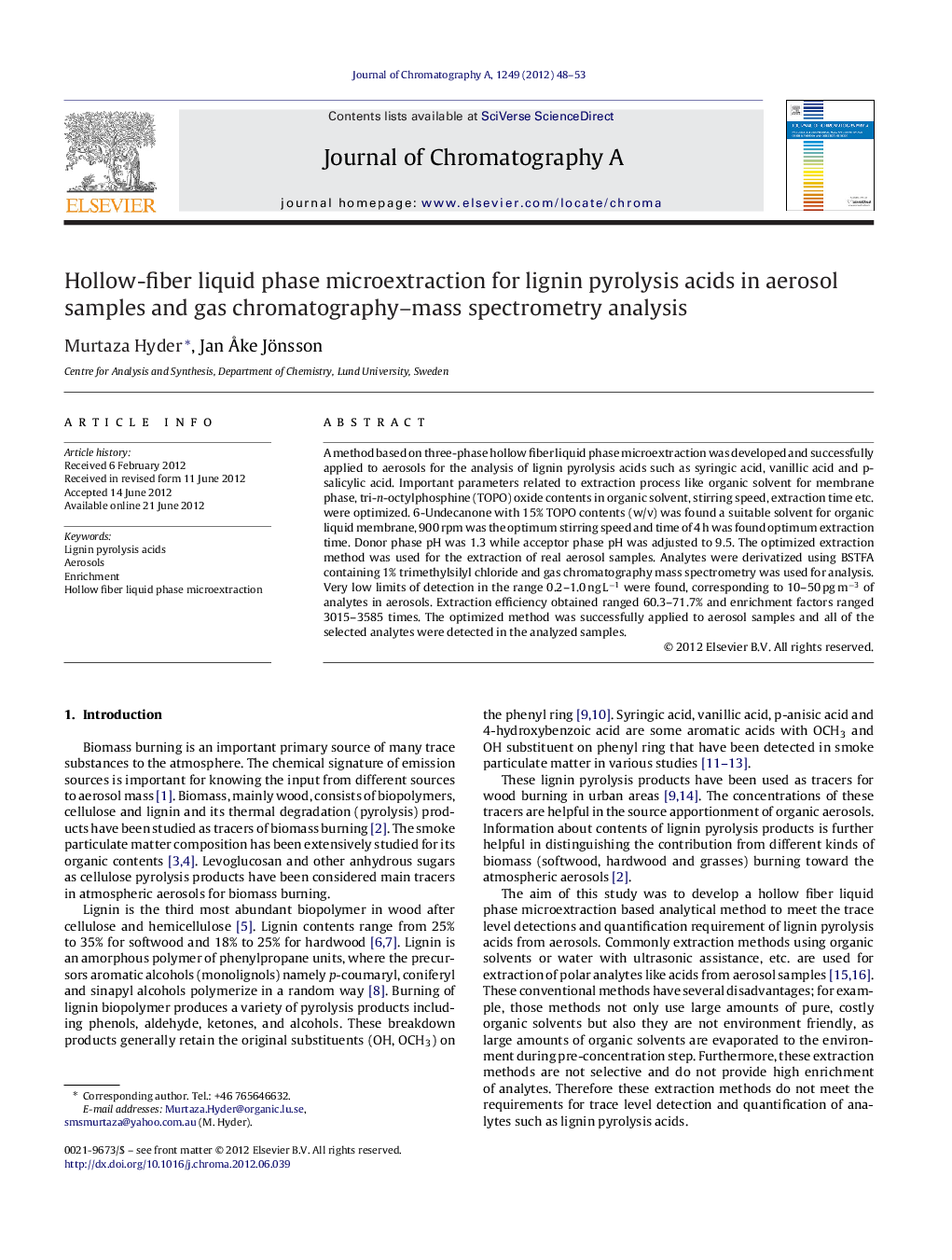| Article ID | Journal | Published Year | Pages | File Type |
|---|---|---|---|---|
| 1200600 | Journal of Chromatography A | 2012 | 6 Pages |
A method based on three-phase hollow fiber liquid phase microextraction was developed and successfully applied to aerosols for the analysis of lignin pyrolysis acids such as syringic acid, vanillic acid and p-salicylic acid. Important parameters related to extraction process like organic solvent for membrane phase, tri-n-octylphosphine (TOPO) oxide contents in organic solvent, stirring speed, extraction time etc. were optimized. 6-Undecanone with 15% TOPO contents (w/v) was found a suitable solvent for organic liquid membrane, 900 rpm was the optimum stirring speed and time of 4 h was found optimum extraction time. Donor phase pH was 1.3 while acceptor phase pH was adjusted to 9.5. The optimized extraction method was used for the extraction of real aerosol samples. Analytes were derivatized using BSTFA containing 1% trimethylsilyl chloride and gas chromatography mass spectrometry was used for analysis. Very low limits of detection in the range 0.2–1.0 ng L−1 were found, corresponding to 10–50 pg m−3 of analytes in aerosols. Extraction efficiency obtained ranged 60.3–71.7% and enrichment factors ranged 3015–3585 times. The optimized method was successfully applied to aerosol samples and all of the selected analytes were detected in the analyzed samples.
► Lignin pyrolysis acids are contaminants that exist at trace levels in organic aerosol. ► Using hollow liquid phase microextraction (HF-LPME) enables very high enrichment of analytes and good clean up of sample. ► HF-LPME can also be applied to aerosol samples. ► LOD are down to pg m−3 and high enrichment factors obtained when HF-LPME is coupled with GC–MS analysis.
